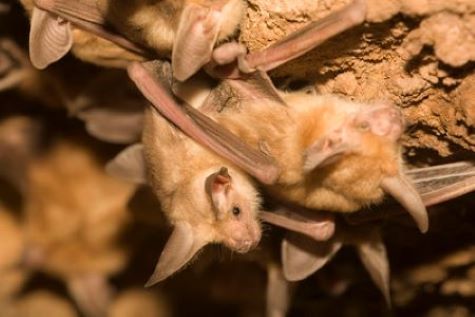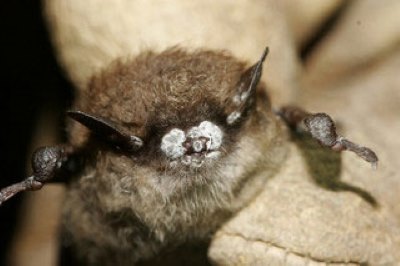There are 25 known bat species in California, such as the little brown bat (Myotis lucifugus), the Mexican free-tailed bat (Tadarida brasiliensis), the hoary bat (Lasiurus cinereus), and California’s state bat the pallid bat (Antrozous pallidus). Most bats eat insects and can eat up to 100% their body weight in insects each night. Some species eat nectar or fruit. Bats provide valuable ecosystem benefits, including the control of insect populations (which can help protect crops), plant pollination, and nutrient dispersal.

Bat populations are at risk due to White-Nose Syndrome (WNS). WNS has not been detected in California yet, but CDFW will continue to monitor for it in the state's bat populations.
Prevent Potential Conflicts
Bats may sometimes roost inside barns and attics or become trapped inside a house or building. Potential conflict with bats may occur due to human health or safety concerns (disease transmission) or property damage caused by bat guano. Because some bats may carry rabies they should not be handled directly, except by a trained professional using proper personal protective equipment (e.g., gloves).

If a person or pet is bitten or scratched by a bat, or exposed to its saliva, notify your local health department immediately.